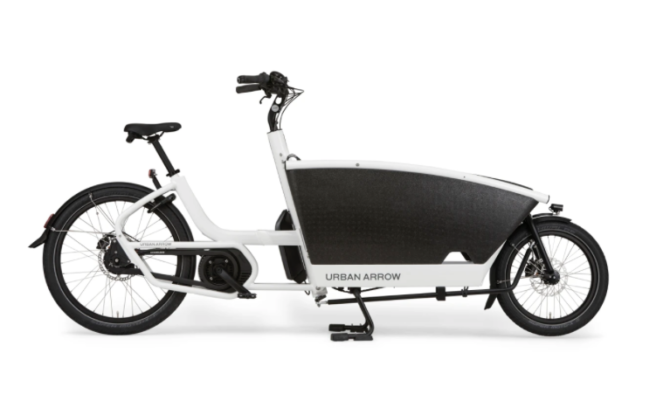From SF. Streetsblog.org
How does a family of four – including a two-year-old and newborn baby – live (and get around the Bay) without owning a car?
By Kim Ratcliff
At 4:30 p.m. on a crisp fall day, two bikers pedaled up to the Madera Grove Children’s Center on the Stanford campus. The rosy-cheeked duo was Arnout and Nicole Zoeller Boelens, who’d come to collect their two-year-old, Ava, from daycare. Arnout, a physical science research scientist at Stanford, was carrying some precious cargo – the couple’s son, Filip. Snuggled under a blue blanket, the four-month-old sat in his car seat secured inside the cargo bike box with an adapter.
Lest you think this was a one-off, it wasn’t. Car-free for 11 years, the Boelens roll exclusively on two wheels. They say they wouldn’t trade their low-stress, adventurous biking lifestyle for anything.
The Flying Dutchman
For Arnout, who grew up in the Netherlands, cycling is in the blood. He met wife Nicole while living in Chicago. Going car-free in the Windy City was a breeze, especially for Nicole, who’d moved there from L.A. and was over being stuck in traffic. After they decided to move to the Bay Area for Arnout’s job in 2017 however, Nicole needed a bit of convincing.
Let’s Give It A Go
The couple purposely chose to live in midtown Palo Alto so both could be within riding distance to work. Aside from renting a car initially to purchase big ticket items for the move, they decided to “give it a go” and never looked back.
“We find it’s just as easy to get around within a five-mile radius by bike than it is by car. We get exercise, fresh air, and save so much money,” said Arnout. Statistics show 48% of car trips are shorter than three miles. Research from AAA states the average yearly cost to own and operate a new vehicle is $10,728, or $894 per month.
Everyday errands are a breeze: Arnout and Nicole ride everywhere including the grocery store and doctor appointments. For outings to San Francisco, the couple hops on Caltrain (using Stanford’s Go Pass, free to eligible affiliates). They take Uber to the airport, use the local host car-sharing app Turo, and rely on friends with cars for getaways to Yosemite and Carmel. On average, the Boelens rent a car three times a year. “Honestly, going carless here is so much easier than I anticipated,” Nicole said.
Photo courtesy of UrbanArrow.com
Read More


